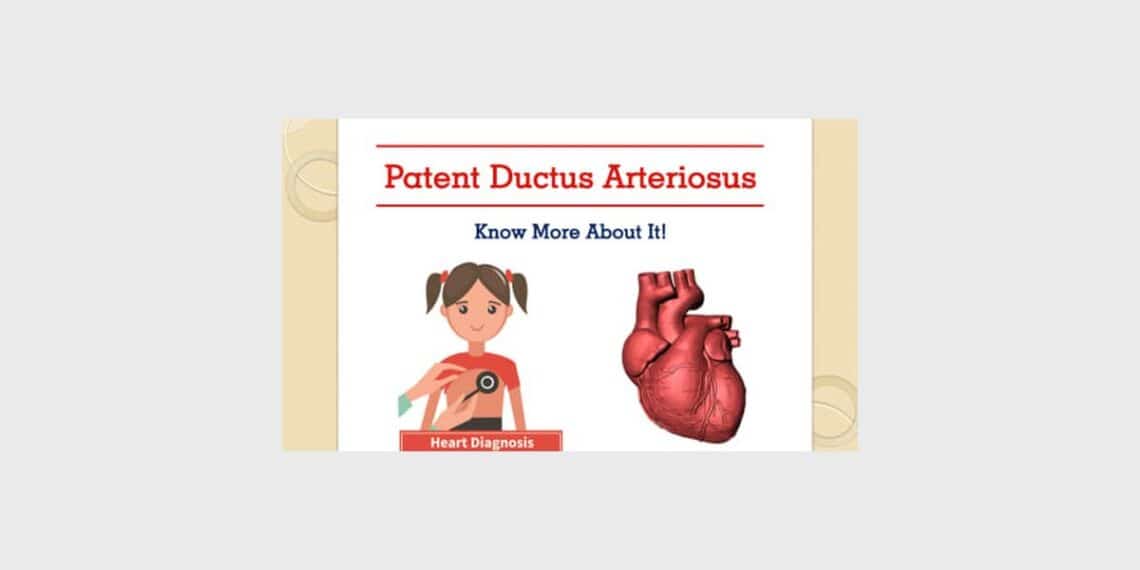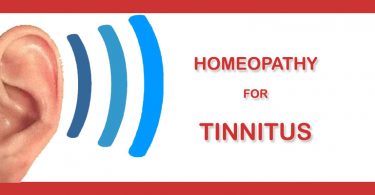The ductus arteriosus is a fetal blood vessel that connects the pulmonary artery to the descending aorta. In patent ductus arteriosus (PDA), the lumen of the ductus remains open after birth. This creates a left to right shunt of blood from the aorta to the pulmonary artery and result in recirculation of arterial blood through the lungs. Initially, PDA may produce no clinical effects, but in time it can precipitate pulmonary vascular disease, causing symptoms to appear by age 40. The prognosis is good if the shunt is small or surgical repair is effective. Otherwise, PDA may advance to intractable heart failure, which may be fatal.
Causes of patent ductus arteriosus
- Patient ductus arteriosus can be idiopathic or it can be a result of some contributing factors such as:
- Premature birth
- Low birth weight
- Hypoxia
- Congenital rubella syndrome
- Infants with neonatal respiratory distress syndrome
- Infants with genetic disorders such as Down syndrome
Symptoms of patent ductus arteriosus
- Rapid or fast breathing
- Shortness of breath
- Poor growth
- Bounding pulse
- Respiratory troubles
- Enlargement of heart
- Palpitation
- Easy fatigue
Diagnosis of patent ductus arteriosus
- Chest X-ray may show increased pulmonary vascular markings, prominent pulmonary arteries, and left ventricle and aorta enlargement.
- Electrocardiography (ECG) may be normal or may indicate left atrial or ventricular hypertrophy and, in pulmonary vascular disease, biventricular hypertrophy.
- Echocardiography detects and helps estimate the size of PDA. It also reveals an enlarged left atrium and left ventricle or right ventricular hypertrophy from pulmonary vascular disease.
- Catheterization allows calculation of blood volume crossing the ductus and can rule out associated cardiac defects. Dye injection definitively demonstrates.
Risks and complications of patent ductus arteriosus
Risks and complications mainly include
- Infection
- Bleeding
- Pneumothorax
- Prolonged chylothorax
- Injury to the heart or lungs
- Injury to the Phrenic or recurrent laryngeal nerves
- Recurrent PDA
- Potential coarctation of the aorta
- Death
Treatment of patent ductus arteriosus
Asymptomatic infants with PDA require no immediate treatment. Those with heart failure require fluid restriction, diuretics, and cardiac glycosides to minimize or control symptoms. If these measures can’t control heart failure, surgery is necessary to ligate the ductus. If symptoms are mild, surgical correction is usually delayed until the infant is between ages 6 months to 3 years, unless problems develop. Before surgery, children with Patent Ductus Arteriosus require antibiotics to protect against infective Endocarditis.
Other forms of therapy include cardiac catheterization to deposit a plug or coil in the ductus to stop shunting.
Special considerations
Patent Ductus Arteriosus necessitates careful monitoring, patient and family teaching, and emotional support.
- Watch carefully for signs for Patent Ductus Arteriosus in all premature neonates.
- Be alert for respiratory distress symptoms resulting from heart failure, which may develop rapidly in a premature neonate. Frequently assess vital signs, ECG, electrolyte levels, and intake and output. Record response to diuretics and other therapy.
- Before surgery, carefully explain all treatments and tests to parents. Include the child and her parents to meet the intensive care unit staff. Tell them about expected I.V. lines, monitoring equipment, and post operative procedures.
- Immediately after surgery, the child may have a central venous pressure catheter and an arterial line in place. Carefully assess vital signs, intake and output, and arterial and venous pressure. Provides pain relief as needed.
- Review instructions to the parents about activity restrictions based on the child’s tolerance and energy levels. Advise parents not to become overprotective as their child’s tolerance for physical activity increases.
- Stress the need for regular follow up examination. Advise parents to inform any practitioner who treats their child about his history of surgery for Patent Ductus Arteriosus—even if the child is being treated for an unrelated medical problem.
Homeopathic treatment of patent ductus arteriosus – Homeopathy is one of the most popular holistic systems of medicine. The selection of remedy is based upon the theory of individualization and symptoms similarity by using holistic approach. This is the only way through which a state of complete health can be regained by removing all the sign and symptoms from which the patient is suffering. The aim of homeopathy is not only to treat patent ductus arteriosus but to address its underlying cause and individual susceptibility. As far as therapeutic medication is concerned, several remedies are available to treat patent us arteriosus duct that can be selected on the basis of cause, sensations and modalities of the complaints. For individualized remedy selection and treatment, the patient should consult a qualified homeopathic doctor in person. There are following remedies which are helpful in the treatment of patent ductus arteriosus symptoms:
Sanguinaria, Rhus Tox, Mercurius, Bryonia, Glonine, Iodum, Causticum, Naja, Arnica, Arsenic Album, Cannabis Indica, Camphor and many other medicines.
Patent Ductus Arteriosus Cases Cured with Homeopathic Medicine
Patent Ductus Arteriosus (PDA) – by Mariangela Marchesini
Patent Ductus Arteriosus with Laryngomalacia with Adenoids – by Rajiv Peres






Sir, My son is 6 yrs old and recently found during the some casual investigations that his PDA (3mm) need to be closed. Is there any remedy for this in Homeopathy to deal the situation without going to surgery. It would be very helpful, if you could let us know more about the treatment. Also, if you could refer a doctor or a hospital in India.
Thank you very much
Girish
Dear Doctors,
My 1year old daughter has PDA(2.2) problem doctors recommended close immediately through surgery, physically my daughter active no illness symptom , Is there any remedy for this in homeopathy to deal the situation without going to surgery ,it would be very helpful,Please kindly any one can share your PDA experience (which is resolved) or kindly any one refer homeopathy doctor in south india tamil nadu who is specialized related to this PDA. Whether PDA resolved in homeopathy or not ? I am looking forward help from homeopathy. your valuable comments will be very much helpful for my baby future
we are consulted doctor who recommended following medicine, is it suitable for PDA issue
1, CALCAREA PHOSPHORICA 6X
2, Spongia
Thanking you !
Hi sir how is your daughter doing now? And what treatment u gave her and now i am really worried because my wife is preganent and they told me to take echo when i took it they told me my wife have pda 3mm which is needed to be closed so am really stressed out like hell sir pls reply me and here is my number +919962666696 please whatsapp me sir
As your wife is pregnant then it is quite complecated case ….if you will took treatment of it from right now then it needs more time to close by medicine …so i will recomending you to wait untill delivery and after delivery you can take medicine for required time ….and if you decided to surgery in this pregnant condition then it will be complicated and may harm to mother or foetus so be careful in descission……i am recomending you to take homeopathic treatment after delivery …
hello sir,
Digitalis is a specific for PDA
Hi sir my daughter is 6 months old and have 4mm pda is there any chance to fit for homopethic medicine or going for surgery or any other option, please wats up me on 7065462442 for suggestions
Hello doctor,,my daughter is 2Yrs old and have 4.8mm pda.Is there any treatment in hpathy for it…my daughter weight is only 8 kg .pls suggest me soon doctor my pls
Hello Sir
My daughter is 3 yrs and has 3 mm PDA. Can this be treated by hpathy pls.
Hi sir my daughter is 7 months old and have 4.5 mm pda is there any chance to fit for homopethic medicine or going for surgery or any other option daughter weight 6.1 kg , please wats up me on 7404037088 for suggestions
My daughter is 1.5 year with pda and Vsd moderate – 3 mm .weight- 7.7 kg.any homeopathic medicine.
Hello Sir/ Madam,My daughter is 3 yrs and has 3 mm PDA. Can this be treated by hpathy pls inform at earliest. If yes, how long it will take time to cure.